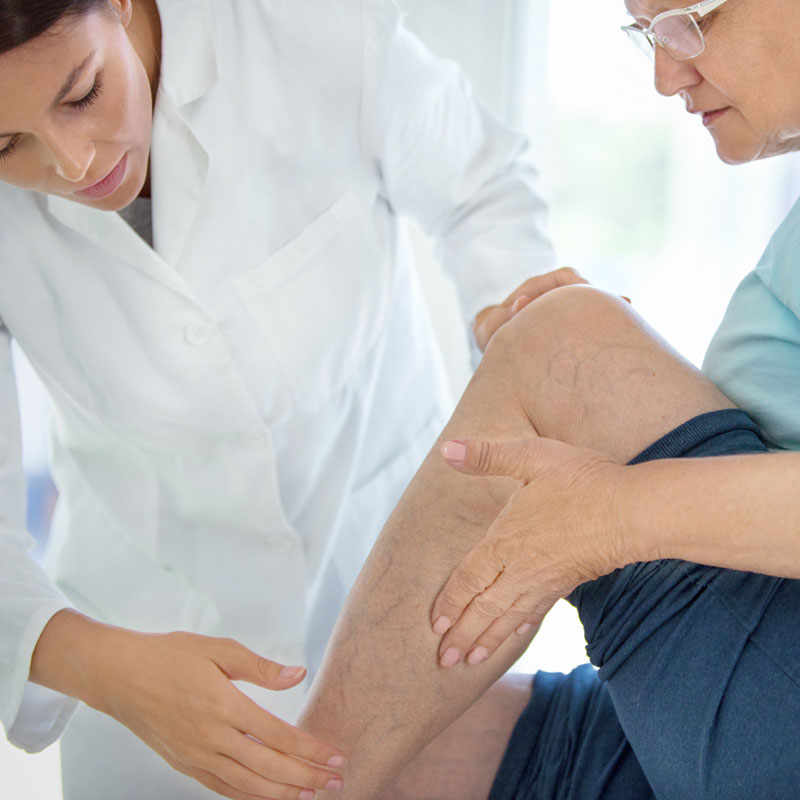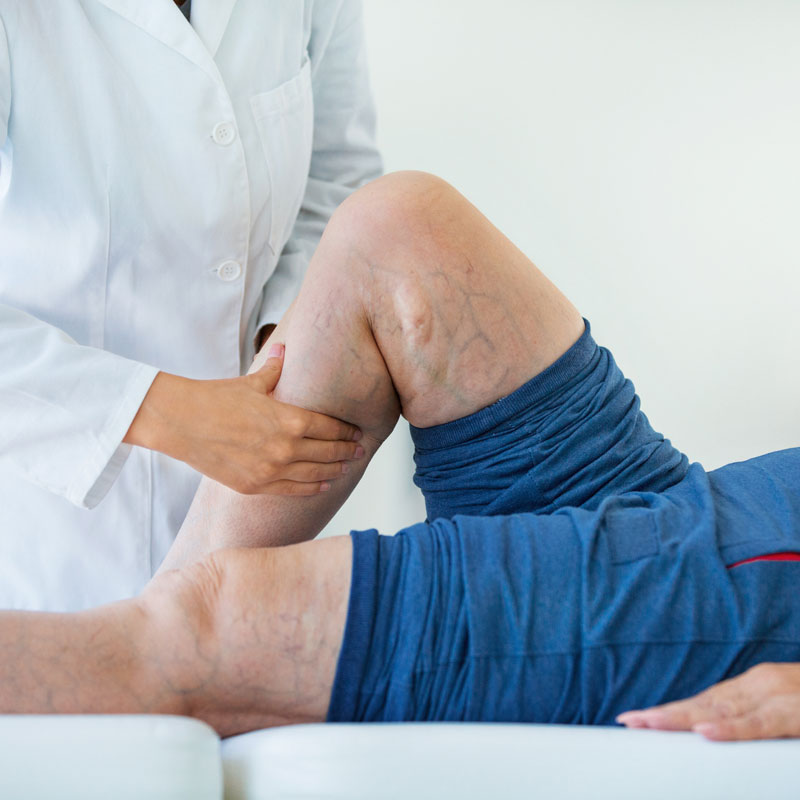Vascular
Vascular Disease Treatments in Metro Phoenix, AZ
At Arizona Vein and Laser Institute, we are committed to promoting vascular health for our patients with cutting-edge procedures at six convenient locations throughout the Phoenix, AZ metro area. The vascular system is a complex network of arteries, veins, and blood vessels. It transports blood containing high levels of oxygen to organs and parts of the body and blood low in oxygen back to the heart to repeat the process. Vascular diseases are caused by problems and complications within this system resulting from genetic causes, a poor diet, or lack of exercise. If you’re experiencing vascular disease symptoms or have been recommended to an endovascular specialist due to health concerns by your doctor, contact us today.

What Causes Vascular Disease?
Vascular diseases are caused by several issues, including plaque buildup in arteries, blockages or blood clots in blood vessels, inflammation, or an injury. However, there are additional factors that put certain parts of the population at higher risk for developing vascular disease, such as:
- Family history of vascular disease
- High blood pressure
- High levels of cholesterol and triglycerides in the blood
- Lack of physical activity
- Obesity
- Smoking
- Diabetes
Carotid Artery Disease and Complications
The carotid artery is a large artery that runs from the chest through the neck and face and delivers oxygen to the brain. Any restriction of blood flow due to plaque buildup or narrowing of the artery walls means that the brain doesn’t receive the oxygen it requires for healthy function. Plaque in the artery can also break off and clog smaller arteries that lead to the brain. Carotid artery disease is a common cause of strokes that can lead to permanent brain damage and muscle weakness, and some are even fatal. Signs of a stroke include:
- Sudden numbness or weakness in the face or extremities on one side of the body
- Trouble speaking or comprehending
- Sudden loss or blurred vision
- Sudden dizziness
Peripheral Vascular Disease and Complications
Peripheral arteries and veins in the body that lead to the arms and legs are also susceptible to the same complications the carotid artery is subjected to, such as plaque buildup and blockages. Any problems with the arteries that transport the oxygen from the heart or the veins that bring blood low in oxygen back to it are considered peripheral vascular diseases (PVD). Patients with PVD may not know they have it until complications from these diseases arise, such as
- Changes in skin, including temperature or shiny, brittle skin on legs and feet
- Gangrene
- Impotence
- Sores or wounds that don’t heal for 2-3 months
- Severe pain in legs or feet
- Thickened opaque toenails
Peripheral Artery Disease and Complications
The most common type of PVD is peripheral artery disease (PAD). PAD is specific to arteries that carry oxygen-rich blood to the extremities. It’s rare that PAD affects the arms and is most common in the legs. Symptoms include cramping, swelling, leg numbness, weak pulse in your legs, a change in skin color, and more. If left untreated severe complications can arise, such as:
Critical Limb Ischemia
Open sores begin to form on the legs and feet that don’t heal. As the infection progresses, the tissue dies and may require amputation.
Stroke and Heart Attack
While plaque buildup may start in the extremities, it can also continue to develop in arteries connected to the heart and brain. The result can be a stroke or heart attack causing lifelong complications and even be fatal.

Arterial Wound Care and Evaluation
Vascular and circulatory issues cause many different types of wounds that have difficulty healing on their own. Patients unaware they have a PVD might be concerned about a wound that doesn’t heal on its own after 8-12 weeks. However, meeting with our specialists, getting a complete exam of vascular health, and understanding the cause ensures patients are well equipped to deal with them in the future. We offer various procedures to properly care for arterial wounds, including:
- Local wounds
- Dressings
- Compression bandages
- Antibiotics
- Surgery
Compassionate and Experienced Vascular Care
Arizona Vein and Laser Institute has dedicated our practice to offering superior vascular care to patients in the Phoenix, AZ metro area. We provide complete examinations and diagnoses of vascular systems and diseases with effective treatment options for all. If you’re experiencing symptoms of vascular disease or are over the age of 60 and due for a screening, contact one of our six locations today.
Customer Reviews
I cannot understate the amazing care I received from Dr Sharma and his whole team! From the front office team to the assistants, ultra sound techs and of course Dr Sharma, each person was friendly, accommodating, and extremely knowledgeable and capable!
I was seen on time. Dr Sharma & his team were very professional. My leg pain has been elevated by leaps and bounds. All my questions, phone calls were handled promptly. Thank you!
